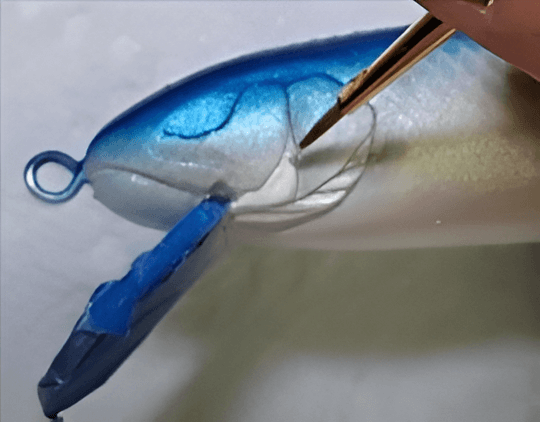With the rapid development of technology and techniques, anglers have their own choices in varying their lures. And using colors such as acrylic is not too strange. But the question is whether it is really good or not?
Contents
What kind of paint do you use on fishing lures?
When asked which fishing lure paint to choose, anglers want to choose the right type of paint because this is very important to achieve the best results. Below, I will mention a few popular types of primer paint.
Airbrush paint
Builders and painters frequently use Createx Airbrush colors because these water-based airbrush paints are easy to apply, thin, and clean. You don’t even need to thin them for many airbrushes; Just fill your cup and start drawing. In my opinion, the affordable prices and many color options will be the highlight of Createx. The paint will clean quickly; you usually need to clean the airbrush by spraying water between color changes. To use this type, you need to use a hair dryer to quickly dry the paint layer before applying a new layer for complex primer patterns with many colors. However, you need to apply a manageable amount of paint to avoid problems when applying epoxy primer.
Acrylic paint
As for regular acrylic paint, you’ll easily find it in hobby stores that works well with specific methods like painting with a brush, sponge, or sponge.
However, I think it doesn’t work as well as the airbrush. In some cases, heavily diluted acrylic paint can be used in the airbrush, but it dries quickly and forms a hard coating. I think you should not use acrylic paint in the airbrush, especially if you are trying to get the best results for your fishing lures.
Specialized lure paint
Netcraft fishing lure paints are acrylic water-based paints specially formulated for brushing and dipping fishing lures, and of course, they will only be used in particular circumstances. It does not absorb water easily, especially after drying. There will also be other specialized primers on the market, such as vinyl and powder coatings, that are also available to customize your primer.
Acrylic paints can be suitable for specific bait painting methods and do not seem too versatile, so airbrush paints, especially water-based paints, are often the preferred choice to achieve professional results on fishing lures.
Is acrylic paint good for fishing lures?
Maybe yes, if you are in specific cases. Acrylic paint can paint fishing lures like a brush, foam, or sponge. But as mentioned earlier, it is not recommended for airbrushing. However, this limitation has a weak impact only if you are a professional fisherman. If you aim for professional results, especially on fishing lures, airbrush paint is the better choice.

Is acrylic paint good for fishing lures?
How do you paint lures with acrylic paint?
Painting fishing lures with acrylic paint can be rewarding and creative, making anglers more effective when fishing. I will summarize some principal points when discussing painting lures.
Preparating
You need to prepare clean bait because this will be the first and most crucial step in our drawing process. So, make sure that your bait is clean and free of dirt, grease, or residue. A clean surface will help the paint adhere better.
A high-quality acrylic paint will help achieve the most perfect result, right? Acrylic comes in various colors, so choose one that matches your desired decoy design. Additionally, you can prepare additional primer to enhance paint gluing by creating a neutral base for your acrylic paint.
Brushes, palettes, water, and tissues are also small items that contribute to our finished products. So don’t forget it.
Painting
Apply acrylic paint directly to the decoy with a brush. Remember that the color layer is needed to create depth and shadow. Then, you let it dry and continue adding more layers of glue.
Before applying a new layer, you need to dip a sponge or brush in paint and lightly dab on the primer. This technique adds texture and simulates scale or pattern. Use a thin coat of paint to avoid obscuring the details of the decoy.
Once you’ve finished your piece, apply a clear sealer (such as epoxy or clear acrylic spray) to protect the paint and shine the primer. Finally, let it dry for a few hours or at the appropriate temperature.
Testing
You can test your products by fishing, right? Take them and confidently go to the beach; you will get results. Lure painting is an art—don’t be afraid to try new techniques. Practice with scrap bait before working with your favorite bait.
Wrap Up
Using acrylic may bring a particular effectiveness in some more specific cases. But if you intend to do this, give it a try. Acrylic paint will be suitable for those just starting out in this creativity because it is easy and cost-effective.

